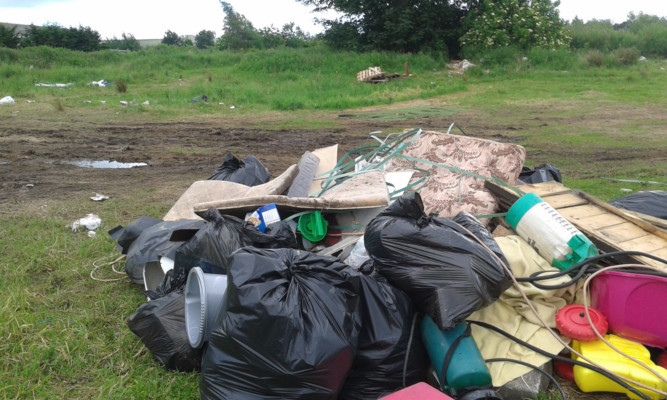Taxpayers have picked up a £43,000 bill to clear-up unauthorised Traveller sites in Angus.
Figures obtained by The Courier revealed the cost to the public purse of clearing up the sites after the Travellers have moved on.
The council was asked to clean up 19 illegal sites last year up from just three in 2013.
Angus Council said the bill for 2014-15 was approximately £43,000 for legal and property-related costs, including those incurred for site clean-up and access prevention.
The local authority offers black sacks to all illegal encampments and advises sacks will be collected if used and set out at allocated spot.
Costs do not include this as collections are made on a “passing” basis.
Angus Council said most sites are left in a reasonable state due to this.
A spokesman for Angus Council said: “Angus Council works within a legal framework for the management of unauthorised encampments.
“Each encampment is different and requires a bespoke approach.
“The council and its partners will work with each encampment to offer support for its occupants and address any issues on a case by case basis.
“The figures provided represent overall costs.
“There is no average case and, therefore, no average cost.”
In January Angus Council leader Iain Gaul said the local authority could ill afford substantial clean-up costs.
Mr Gaul said it was “not frustrating, but bloody annoying” that the council is forced to pick up the tab.
He said the council had spent a “fortune” on works including digging ditches, putting in barriers and placing boulders over entrances to open areas of ground to prevent unauthorised entry.
In theory, the 149-year-old Trespass (Scotland) Act 1865 can deem it an offence to set up a site without permission but police are bound by guidelines issued by the Lord Advocate in 2004 that there is a presumption against prosecution of Travellers for such a crime.
It means officers have no legal right or authority to clear illicit sites or move Travellers from land and to do so would be unlawful.
Travellers have a long history in Scotland, with a number of references to them in royal circles during the realm of James IV in the early 16th Century.
When the first gypsies arrived in Denmark in 1505 they even carried a letter of recommendation from the Scottish king, and it is known Romanies danced at Holyrood Palace in 1530.
While they have been in Scotland for many centuries, they still retain much of their own cultures and customs.
